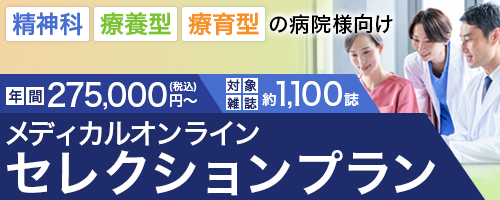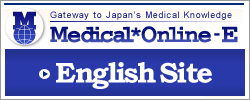アブストラクト
Japanese
| Title | マスク着用による生理学的負担 |
|---|---|
| Subtitle | 総説 |
| Authors | 上野哲 |
| Authors (kana) | |
| Organization | 独立行政法人労働者健康安全機構労働安全衛生総合研究所環境計測研究グループ |
| Journal | 日本職業・災害医学会会誌 |
| Volume | 69 |
| Number | 1 |
| Page | 1-8 |
| Year/Month | 2021 / 1 |
| Article | 報告 |
| Publisher | 日本職業・災害医学会 |
| Abstract | 「要旨」: 職場における新型コロナウイルス感染症(COVID-19)を防止のための基本対策の一つにマスクの着用が挙げられている. 粉塵等の有害物質のばく露を受ける労働環境ではマスクの着用が義務づけられているように新型コロナウイルス感染症対策でも職場でマスクの着用を要求される可能性がある. 熱中症が重大な労働衛生上の問題となる夏季において, マスクの着用により熱中症の危険性を高めるかどうか問題となっている. 本稿では, 最初に呼吸による放熱量をモデル計算で予測する. 次に, 吸気抵抗や運動強度の程度により防護用のマスクの着用が及ぼす生理学的な負担についての文献を紹介する. 最後にサージカルマスクやN95マスクのウイルスへの防御性能についての文献を紹介する. 同種のマスクでも物理的な特性に違いがあるため, 通気性が高くフィルター機能も優れたマスクを選択することの重要性を指摘する文献もあった. |
| Practice | 臨床医学:外科系 |
| Keywords | マスク, 生理学的負担, COVID-19, mask, physiological burden |
English
| Title | Physiological Burden by Wearing a Mask |
|---|---|
| Subtitle | |
| Authors | Satoru Ueno |
| Authors (kana) | |
| Organization | Work Environment Research Group, National Institute of Occupational Safety and Health, Japan Organization of Occupational Health and Safety |
| Journal | Japanese journal of occupational medicine and traumatology |
| Volume | 69 |
| Number | 1 |
| Page | 1-8 |
| Year/Month | 2021 / 1 |
| Article | Report |
| Publisher | Japanese society of Occupational Medicine and Traumatology |
| Abstract | Wearing a mask is listed as a basic measure to prevent COVID-19 in the workplace. Just as wearing a mask is obligatory in a work environment exposed to hazardous substances, it may be required to wear a mask at work to prevent COVID-19. During summer when occupational heat disorder is a critical issue, whether the risk of heat disorders is elevated by wearing a mask is an issue. Here, we first predict the heat release due to respiration by model calculation. Next for protective masks, we introduce the literature on the effect of wearing the mask on physiological burdens depending on the inspiratory resistance or the exercise intensity. Finally, we introduce the literature on the filtering efficiency against viruses of surgical masks and N95 masks. There is also a document that points out the importance of selecting a mask with high filtering efficiency and low airflow resistance, because even the same type of masks has different physical characteristics. |
| Practice | Clinical surgery |
| Keywords | mask, physiological burden, COVID 19 |
- 全文ダウンロード: 従量制、基本料金制の方共に770円(税込) です。
参考文献
- 1) World Health Organization: WHO Director-General's opening remarks at the media briefing on COVID-19. https://www.who.int/dg/speeches/detail/who-director-general-s-opening-remarks-at-the-media-briefing-on-covid-19---11-march-2020
- 2) 内閣官房 : 東京 : 新型コロナウイルス感染症対策の基本的対処方針(令和2年3月28日(令和2年5月14日変更)). https://corona.go.jp/expert-meeting/pdf/kihon_h_0514.pdf
- 3) Nianyi Z, Zewen Li, Sherrianne Ng, et al: Epidemiology reveals mask wearing by the public is crucial for COVID-19 control. Medi Microecology 4: 100015, 2020.
- 4) Eikenberry SE, Mancuso M, Iboi E, et al: To mask or not to mask: Modeling the potential for face mask use by the general public to curtail the COVID-19 pandemic. Infect Dis Model 5: 293-308, 2020.
- 5) 厚生労働省 : "職場における新型コロナウイルス感染症への感染予防, 健康管理の強化について"(令和2年5月14日). https://www.mhlw.go.jp/content/11302000/000630690.pdf
残りの38件を表示する
- 6) 国土交通省 : 建設業における新型コロナウイルス感染予防対策ガイドライン(令和2年5月14日). https://www.mlit.go.jp/tec/content/001344175.pdf
- 7) 厚生労働省 : 2019年職場における熱中症による死傷災害の発生状況(確定値). https://www.mhlw.go.jp/content/11303000/000612135.pdf
- 8) Cirrincione L, Plescia F, Ledda C, et al: COVID-19 pan-demic: prevention and protection measures to be adopted at the workplace. Sustainability 12: 3603, 2020.
- 9) Yokoyama S, Ogino H: Theoretical and experimental studies on calculation formula of respiratory heat loss. 日本生気象学会誌 20: 1-7, 1983.
- 10) Malchaire J, Piette A, Kampmann B, et al: Development and validation of the predicted heat strain model. Ann Oc-cup Hyg 45: 123-135, 2001.
- 11) International Organization for Standardization(ISO): Er-gonomics of the thermal environment-Analytical detemi-nation and interpretation of heat stress using calculation of the predicted heat strain. (Standard No. ISO 7933:2004). Ge-neva, ISO, 2004.
- 12) International Organization for Standardization(ISO): Er-gonomics of the thermal environment-Assessment of heat stress using the WBGT(wet bulb globe temperature) in-dex. (Standard No. ISO 7243:2017). Geneva, ISO, 2017.
- 13) American Conference of Governmental Industrial Hy-gienists(ACGIH): Heat Stress and Strain TLV(R), in Thresh-old Limit Values and Biological Exposure Indices for Chemical Substances and Physical Agents. ACGIH, 2018.
- 14) Chen WY, Juang YJ, Hsieh JY, et al: Estimation of respi-ratory heat flows in prediction of heat strain among Tai-wanese steel workers. Int J Biometeorol 61: 115-125, 2017.
- 15) 気象庁 : 過去の気象データ検索. http://www.jma.go.jp/jma/index.html
- 16) 環境省 : 熱中症予防情報サイト. https://www.wbgt.env.go.jp/
- 17) Szeinuk J, Beckett WS, Clark N, Hailoo WL: Medical evaluation for respirator use. Am J Ind Med 37: 142-157, 2000.
- 18) Dooly CR, Johnson AT, Dotson CO, et al: Peak oxygen consumption and lactate threshold in full mask versus mouth mask conditions during incremental exercise. Eur J Appl Physiol Occup Physiol 73: 311-316, 1996.
- 19) National Institute of Occupational Safety and Health: Code of Federal Regulations(42 CFR 84.180). Airflow resistance tests. http://www.gpo.gov/fdsys/pkg/CFR-2007-title42-vol1/pdf/CFR-2007-title42-vol1-sec84-180.pdf
- 20) Shykoff BE, Warkander DE: Physiologically acceptable resistance of an air purifying respirator. Ergonomics 54: 1186-1196, 2011.
- 21) Caretti DM, Whitley JA: Exercise performance during inspiratory resistance breathing under exhaustive con-stant load work. Ergonomics 41: 501-511, 1998.
- 22) Roberge RJ, Kim JH, Powell JB, et al: Impact of low filter resistances on subjective and physiological responses to fil-tering facepiece respirators. PLOS one 8: e84901, 2013.
- 23) Qiu M, Wang S: Effect of respirator resistance on toler-ant capacity during graded load exercise. J Huazhong Univ Sci Technol 32: 434-437, 2012.
- 24) Yao BG, Wang YX, Ye XY, et al: Impact of structural features on dynamic breathing resistance of healthcare face mask. Sci Tot Environ 689: 743-753, 2019.
- 25) Kim JH, Benson SM, Roberge RJ: Pulmonary and heart rate responses to wearing N95 filtering facepiece respira-tors. Am J Infect Control 41: 24-27, 2013.
- 26) Roberge RJ, Kim JH, Benson SM: Absence of consequen-tial changes in physiological, thermal and subjective re-sponses from wearing a surgical mask. Res Physiol Neur 181: 29-35, 2012.
- 27) Li Y, Tokura H, Guo YP, et al: Effects of wearing N95 and surgical facemasks on heart rate, thermal stress and subjective sensations. Int Arch Occup Environ Health 78: 501-509, 2005.
- 28) Roberge R, Kim JH, Coca A: Protective facemask impact on human thermoregulation: an overview. Ann Occup Hyg 56: 102-112, 2012.
- 29) Cotter JD, Taylor NAS: The distribution of cutaneous sudomotor and alliesthesial thermosensitivity in mildly heat-stressed humans: an open-loop approach. J Physiol 565: 335-345, 2005.
- 30) Nielsen R, Berglund LG, Gwosdow AR, Dubois AB: Thermal sensation of the body as influenced by the ther-mal microclimate in a face mask. Ergonomics 30: 1689-1703, 1987.
- 31) Laird IS, Goldsmith R, Pack RJ, Vitalis A: The Effect on Heart Rate and Facial Skin Temperature of Wearing Res-piratory Protection at Work. Ann Occup Hyg 46: 143-148, 2002.
- 32) Kim JH, Seo Y, Quinn T, et al: Intersegmental differ-ences in facial warmth sensitivity during rest, passive heat and exercise. Int J Hypertherm 36: 654-659, 2019.
- 33) Hayashi C, Tokura H: The effects of two kinds of mask(with or without exhaust valve) on clothing microclimates inside the mask in participants wearing protective clothing for spraying pesticides. Int Arch Occup Environ Health 77: 73-78, 2004.
- 34) Roberge RJ, Kim SH, Benson S: N95 filtering facepiece respirator deadspace temperature and humidity. J Occup Environ Hyg 9: 166-171, 2012.
- 35) Shenal BV, Radonovich LJ, Cheng J, et al: Discomfort and exertion associated with prolonged wear of respira-tory protection in a health care setting. J Occup Environ Hyg 9: 59-64, 2012.
- 36) 3M Bulletin. Job health highlight 1: 10, 1983.
- 37) Johnson DF, Druce JD, Birch C, Grayson ML: A quanti-tative assessment of the efficacy of surgical and N95 masks to filter influenza virus in patients with acute influenza in-fection. Clin Infect Dis 49: 275-277, 2009.
- 38) Li Y, Wong T, Chung J, et al: In vivo protective perform-ance of N95 respirator and surgical facemask. Am J Ind Med 49: 1056-1065, 2006.
- 39) Lee SA, Grinshpun SA, Reponen T: Respiratory per-formance offered by N95 respirators and surgical masks: Human subject evaluation with NaCl aerosol representing bacterial and viral particle size range. Ann Occup Hyg 52: 177-185, 2008.
- 40) He X, Reponen T, McKay RT, Grinshpun SA: Effect of particle size on the performance of an N95 filtering face-piece respirator and a surgical mask at various breathing conditions. Aerosol Sci Tech 47: 1180-1187, 2013.
- 41) Radonovich LJ, Simberkoff MS, Bessesen MT, et al: N95 Respirators vs Medical Masks for Preventing Influenza Among Health Care Personnel: A Randomized Clinical Trial. JAMA 322: 824-833, 2019.
- 42) Loeb M, Dafoe N, Mahony J, et al: Surgical Mask vs N95 Respirator for Preventing Influenza Among Health Care Workers: A Randomized Trial. JAMA 302: 1865-1871, 2009.
- 43) Liu Z, Yu D, Ge Y, et al: Understanding the factors in-volved in determining the bioburdens of surgical masks. Ann Trans Med 7: 754, 2019.



